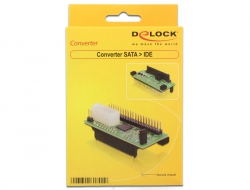First post, by Wild-E
Hi dear forum readers,
I've put together a nice retro PC (AMD-K6II+, DOS/Win98, Audacian32... ). It has a nice silent CPU cooler, a nice silent PSU, passive GPU (for the time being, at least).
.
.
.
.... Oh but the hard drives, the hard drives are noisy as **** and they are making me ears bleed and meh brain go CRAZY!!!!
Ok. Well, now that's out of my chest (ok, maybe I'm exaggerating a bit), but seriously, these old IDE drives are really loud (compared to modern standards and for a silent computing fanatic) and might fail at any moment, being 10+ years old.
I'd presume retro builders have used all kinds of PATA -> SSD solutions. So, what are your recommendations on replacing these? Would a PATA->SATA adapter with an off-the-shelf (small/cheap) SATA SSD work fine? Or, are these usable?
Another thing that comes into mind, is that (depending on the age of the retro build) even the smallest SSDs might be larger than the size limit that the computer can handle; but usually there are ways around that.
Any other options I might have missed / now be aware of? Or something else that shuld be taken into consideration?
